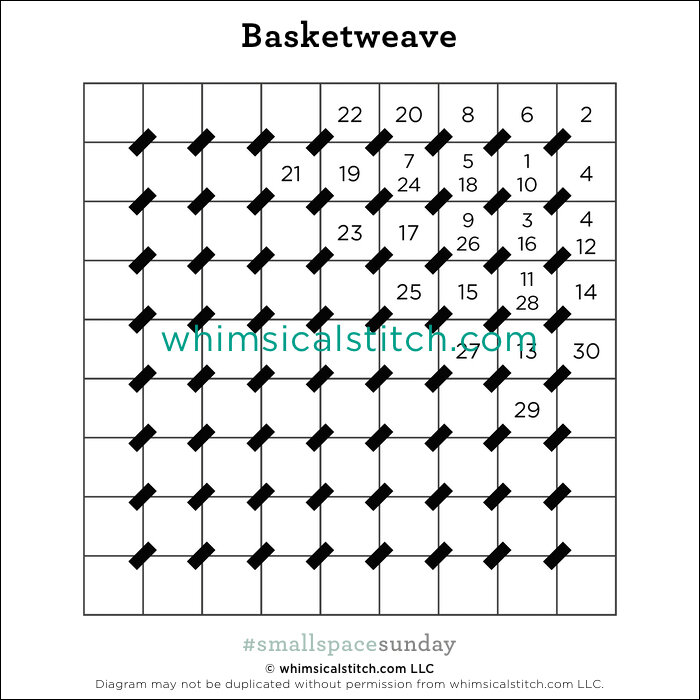I found this little gem in Carolyn Hedge Baird's Teeny Tiny Needlepoint Stitches. I'm having a blast with it of late.
The base stitch (the black lines) creates oblong diamonds. Note the stitches are up (or down) two rows and over one. Simply add an Upright Cross in the intersections and, voila! Adorableness!
The second version integrates beads instead of Upright Crosses. Frankly, more adorable.
I purposefully did not add the very small compensation stitches above the top row of beads and below the lower row of beads because the stitches are so small that their inclusion does not make a meaningful difference.
The stitched sample on Instagram illustrates the top version of this stitch on a roof on a Debbie Mumm cottage. It was a quick and easy stitch.
Frankly, due to the small nature of this stitch, I recommend a single strand thread such as Elegance, Pearl Cotton, Vineyard Silk, and the like. If you use a stranded silk, cotton floss, or wool (as I did above), I recommend using a minimal number of strands to keep the elongated diamond well defined.
These stitch diagrams, along with other #whimsicalwednesday and #smallspacesunday stitch diagrams, can also be found on pinterest.com.
Be sure to follow whimsicalstitch.com on Facebook, Pinterest, Instagram, and Twitter.
If you like what you see on this blog, want to learn some very creative decorative stitches, and how to put them all together, whimsicalstitch.com sells stitch guides for seasonal Melissa Shirley designs. 26 guides are currently available, including three new Debbie Mumm Santa guides and the blue version of the Shell Table. More are in the pipeline. In fact, I'm waiting for one finished piece to return from the finisher, so it will be any day now!
I hope you enjoy this stitch as much as I am!






















